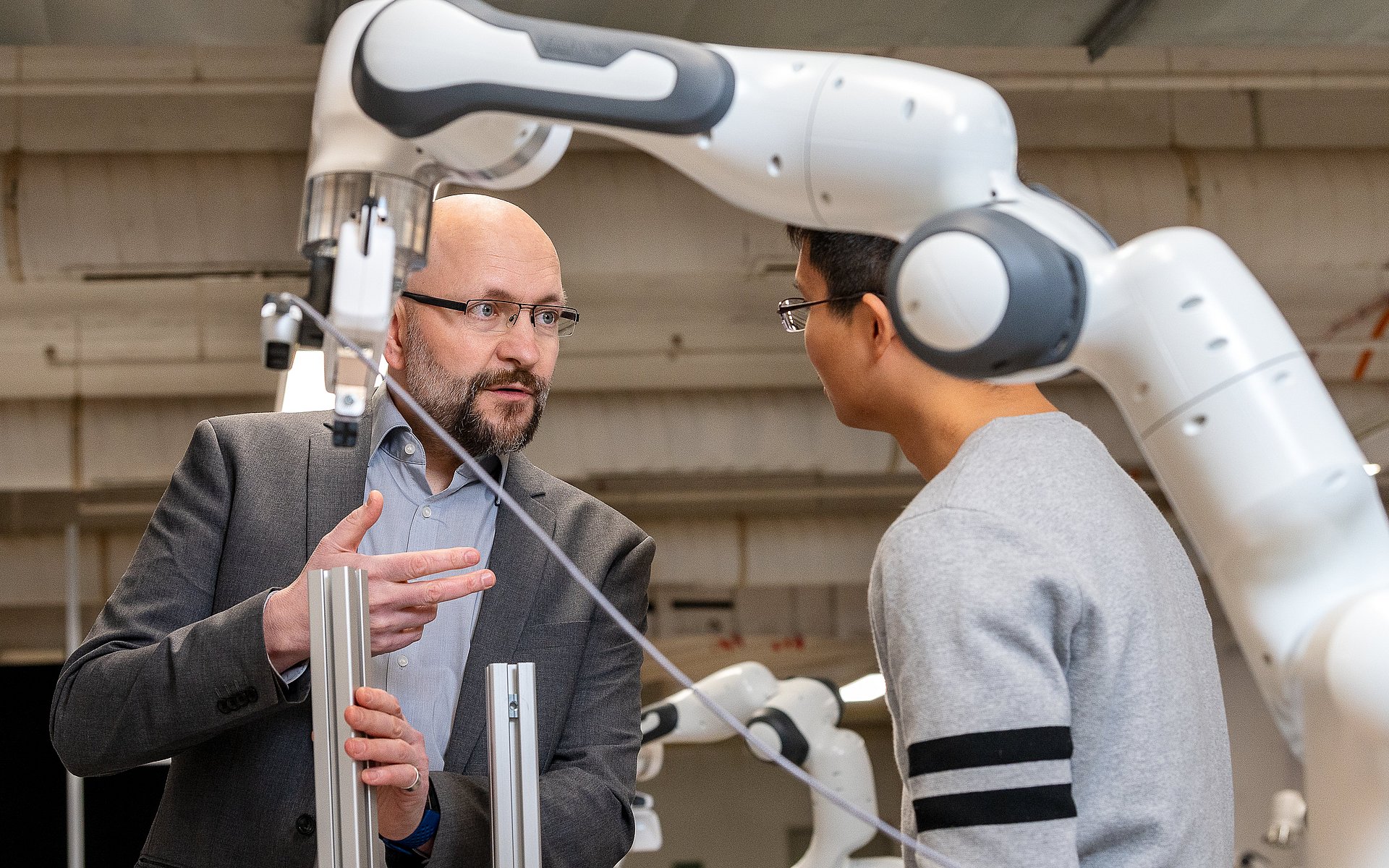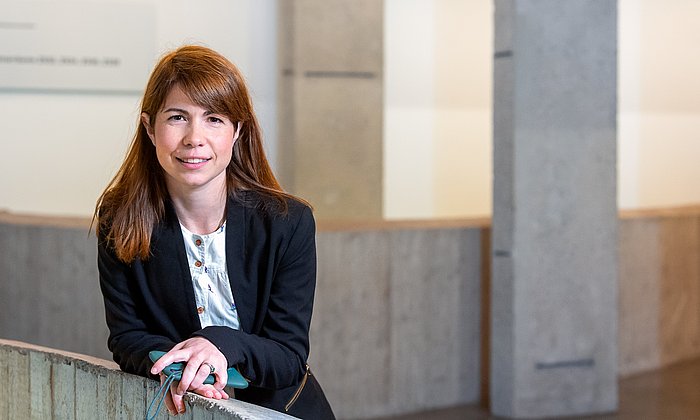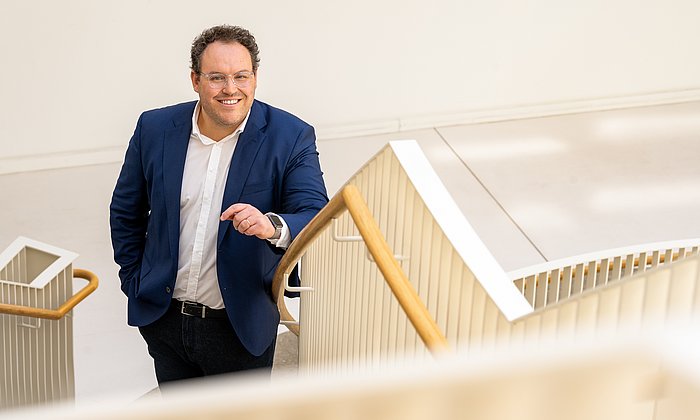NewIn: Achim Lilienthal
Making robots learn to smell
Mr. Lilienthal, you were appointed to the newly created Chair of Perception of Intelligent Systems only a few months ago. What areas do you cover?
I deal primarily with three topics: the sense of smell of robots in the context of the environment and sustainability, mobile robots and how they can safely and efficiently navigate, especially in industrial environments, and how artificial intelligence can build on existing domain knowledge instead of having to learn things over and over again.
What are robots that can smell good for?
These robots react to gases and are capable of detecting toxic gases such as methane and carbon monoxide. At a mine in Kiruna, Sweden, for example, underground diesel-powered machines were converted to electric operation. This requires very heavy and powerful batteries. To detect when these batteries are running hot or even at risk of catching fire, we have installed toxic gas sensors in the mine and on vehicles. We also want to find geothermal springs and map the locations where gases are detected in order to identify suitable places for drilling. Our long-term goal is to automate the measurement and mapping processes and have the data interpreted by an AI system. With the sense of smell for robots, the Munich Institute of Robotics and Machine Intelligence (MIRMI) neben dem Sehen und dem Fühlen nun einen weiteren menschlichen Sinn ab und wird immer mehr zum „Center of the Senses“.
Sensory perception also plays a role with mobile robots …
Yes, if robots are to navigate safely and efficiently, a precise sensory awareness of their surroundings is essential. An important application area is industrial environments. These can be highly dynamic areas, especially in locations such as warehouses not originally designed for automation. At Örebro University we have deliberately chosen a "semi-controlled environment" for our research, where vehicles travel more slowly than, say, cars, and changes can be introduced that can make subtasks easier for robots. We can also use safety vests for the employees. This makes them easy to recognize, even in the dark. If we had gone straight into road traffic, we would have had too many challenges to deal with at once. We are now using what we have learned for factory applications – and of course in the MIRMI lighthouse project KI.Fabrik.
What role does artificial intelligence play in your research?
In my research AI is always used where there are dependencies that are difficult to model without it. With my research group and in collaboration with DLR I am trying to develop particularly data-efficient and reliable approaches in which AI builds on existing domain knowledge. For example, a smelling robot should "know" the partial differential equations from physics that describe the dispersion of gases. This can then be used, as in the example of the search for good geothermal sources, to automatically and reliably decide where to measure next.
Another example is eye movement tracking. If a robot wants to move through a crowd without bumping into people all the time, it helps if it can analyze which way people are looking. This can help it decide what direction to move in. There are already startups developing technology to do this. AI plays a key role both in tracking people’s line of sight and interpreting a sequence of looks.
What are you most looking forward to at TUM?
I’m looking forward to the interdepartmental exchange within the organization.
After all, promoting this interdisciplinary exchange is one of the hallmarks of the integrated institute MIRMI. My big goal is to establish a sort of "Robot Olfaction CERN" in Munich, a high-tech laboratory for the sense of smell in robotics as a point of contact for scientific teams from all over the world working on this topic.
- Prof. Achim J. Lilienthal is a principal investigator at the Munich Institute of Robotics and Machine Intelligence . With MIRMI, TUM has established an integrative research center for science and technology to develop innovative and sustainable solutions for the central challenges of our time. The institute has leading expertise in central fields of robotics, perception and data science.
- This research chair is funded through the Hightech Agenda Bayern.
- All NewIn episodes.
Technical University of Munich
Corporate Communications Center
- Andreas Schmitz
- schmitz@zv.tum.de
- presse@tum.de
- Teamwebsite
Contacts to this article:
Prof. Achim J. Lilienthal
Technical University of Munich
Chair of Perception for Intelligent Systems
achim.j.lilienthal(at)tum.de



![[Translate to English:] [Translate to English:]](/fileadmin/_processed_/1/b/csm_KI_Faktory_AH_742563_-_Kopie_5886eb7c1a.jpg)